Sand dunes present an incredible array of shapes, forms, and textures, which makes them highly photogenic. When I first started photographing dunes I was fascinated by those abstract patterns, especially with low-angle light raking across them. And I still am.
But on our last visits to Death Valley, at the end of February and beginning of March, I realized that my tastes have evolved, and I actually prefer photographing the dunes in soft light, before the sun reaches them in the morning, or after the sun leaves them in the evening. At dawn and dusk the dunes can reflect beautiful colors from the sky, turning gold, blue, pink, or even purple. But also, and perhaps more importantly, they look softer. Under that light the dunes look like big, fluffy pillows of sand. They’re less harsh, and more inviting.
And that realization led me to another one: that I love finding soft-looking things in the desert. Many of my favorite non-dune photographs from Death Valley also feature rounded shapes, or curvy lines, creating a contrast in feeling with the harsh desert landscape.
And knowing all that made me look deliberately for softer subjects. That doesn’t mean I’ll ignore something interesting that doesn’t fit that mold, just that I’m more likely to notice those rounded shapes or curvy lines now.
Gaining an insight into your own photography like that can lead to making more meaningful photographs. It might help you develop a more personal vision, because you gain a conscious understanding about the unique way you see things and respond to the world around you.
I sometimes try to help students find common themes in their work that they may have overlooked. Obvious themes include photographs of particular subjects or places. But I think it’s more interesting when you can find less-obvious threads in your photography. Maybe you like a certain color palette. Perhaps you often make similar compositions of completely different subjects. Maybe you have a preference for a certain kind of light.
If, like most of us, you’re stuck at home these days, and have some extra time on your hands, this could be a good opportunity to look through your past work. You might find some hidden gems that you overlooked previously. You could catch up on that backlog of images that you haven’t had a chance to process, or reprocess some older photos with newly-learned skills.
And while you’re at it, look for some of those less-obvious themes in your photography. Here’s an off-the-top-of-my-head list of questions you can ask, and things you can look for:
Questions to Ask While Looking for Themes in Your Work
– What subjects are you most attracted to? Try to get specific. In other words, rather than just saying “landscapes,” or “people,” ask yourself what kind of landscapes? Deserts? Forests? Mountains? Oceans? Cityscapes? Specific places? Small scenes, or grand landscapes? Dramatic scenes, or quieter ones? Wide-open spaces, or densely-packed environments? If it’s people, do you prefer portraits? Candids? Street photography? Photos of your family? Photos of specific people? Children, adults, or older people? Men or women? People doing things, or people at quiet moments? Groups of people interacting with each other, or lone figures?
– Here’s a basic one: Do you prefer color, or black-and-white?
– If it’s color, are you attracted to a certain color palette? Do you prefer bold colors, or subtle colors? Are there certain hues that appeal to you?
– Do you like high-key (predominately light) or low-key (predominately dark) photographs? High contrast or low contrast?
– Are you attracted to certain kinds of light?
– Do you prefer simple, sparing compositions, or complex ones?
– Can you find some common themes in your compositions? For example, look for repeating horizontal layers, repeating vertical lines, or images with lots of diagonals. Maybe you often put the main focal point right in the center, or near the edge. Maybe you like rectangles, or curves, or circles.
– Do you like textures, or patterns? Do you like abstracts, or do you prefer more literal images that tell a story?
– Do you like photographs with dynamic tension, or calm, serene images?
You might find yourself answering “All of the above” to some of these questions. Maybe you like both color and black and white. You might be attracted to both big landscapes and smaller scenes. That’s fine. The idea isn’t to limit yourself to one thing, but to find some common threads, and gain insights into the unique way you see the world. I hope you’ll find multiple themes, and perhaps be able to develop one or two of them into deeper, well-rounded, cohesive portfolios.
My primary subject is nature, but within that genre I photograph many different subjects in different ways. I photograph both big, dramatic scenes and small quiet ones. I photograph during the day and at night. I like abstracts, but I also enjoy making more literal images that tell stories.
Despite all that variety, there are some common threads. I’m strongly attracted to light and color. I try to keep my compositions clean, simple, and direct (though sometimes I’ll add a bit of complexity). Above all, day or night, big landscape or small, I’m trying to capture a mood or feeling.
I’m not particular about what mood a photograph might convey, as long as it has one. I find, however, that I make some of my best images when I tune into my feelings about a particular place. Different landscapes evoke different feelings for me, and when I become conscious of those reactions I’m more likely to recognize compositions that might capture how I feel about that place – like realizing that I’m attracted to soft subjects in harsh deserts, or to the dark, primeval mood of a redwood forest.
The list of questions posted above is just a partial one; I could probably think of dozens more. But I hope they’ll get you thinking, and maybe you’ll come up with some questions of your own. If you think of an interesting question that might help people gain some insight into their work, please post it in the comments. And good luck!
— Michael Frye
Related Posts: The Primeval Forest; A Storm Brewing
Michael Frye is a professional photographer specializing in landscapes and nature. He is the author or principal photographer of The Photographer’s Guide to Yosemite, Yosemite Meditations, Yosemite Meditations for Women, Yosemite Meditations for Adventurers, and Digital Landscape Photography: In the Footsteps of Ansel Adams and the Great Masters. He has also written three eBooks: Light & Land: Landscapes in the Digital Darkroom, Exposure for Outdoor Photography, and Landscapes in Lightroom: The Essential Step-by-Step Guide. Michael has written numerous magazine articles on the art and technique of photography, and his images have been published in over thirty countries around the world. Michael has lived either in or near Yosemite National Park since 1983, currently residing just outside the park in Mariposa, California.

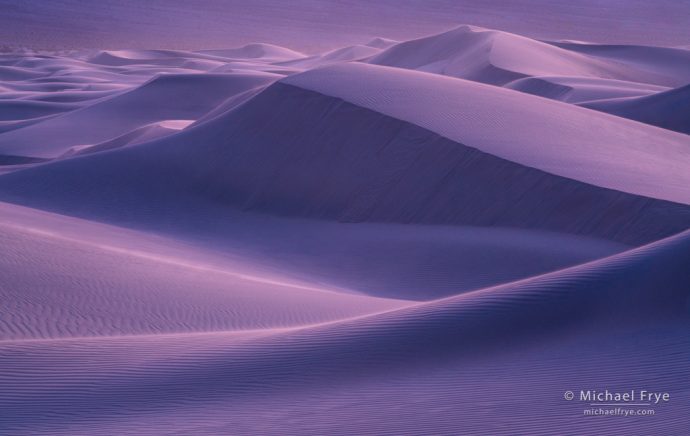
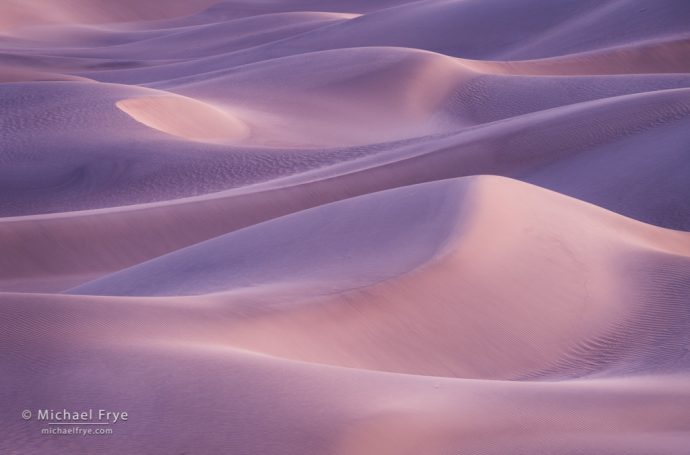
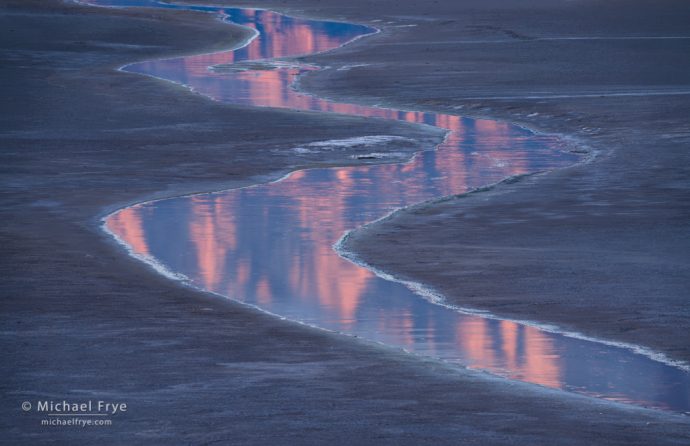
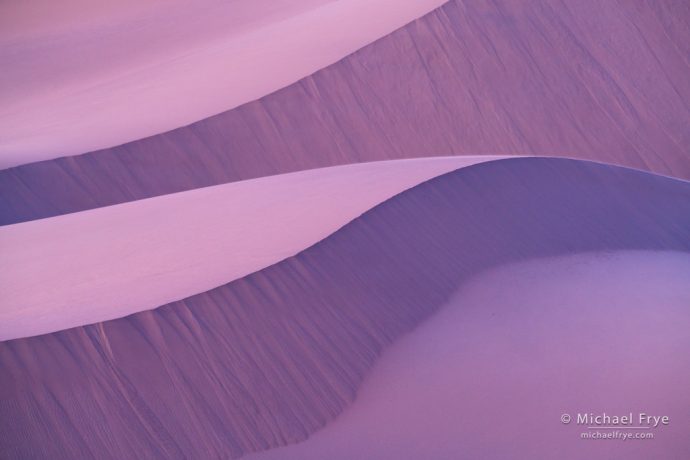
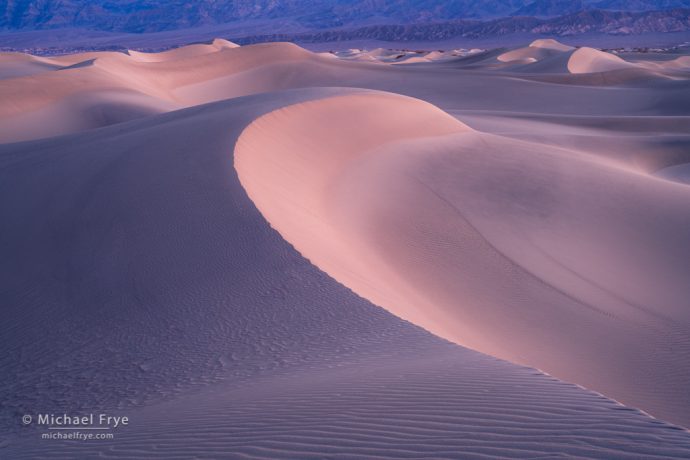
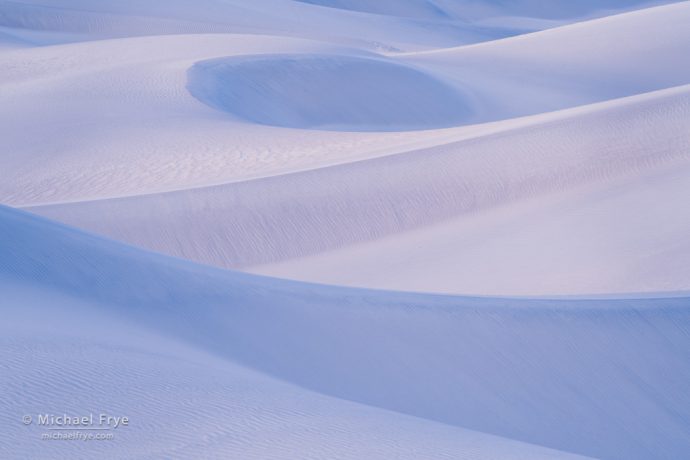
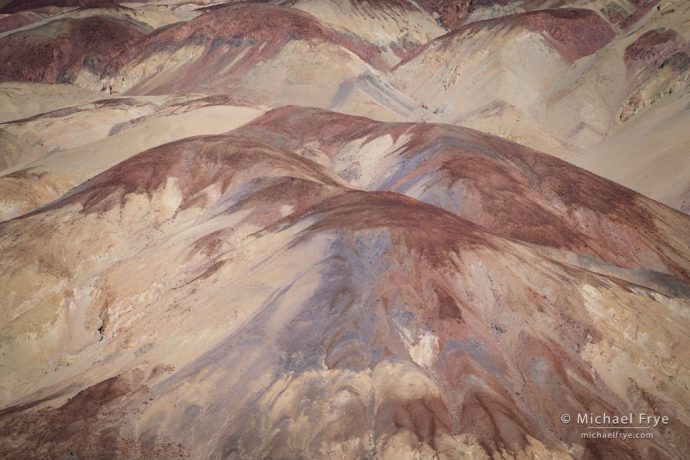
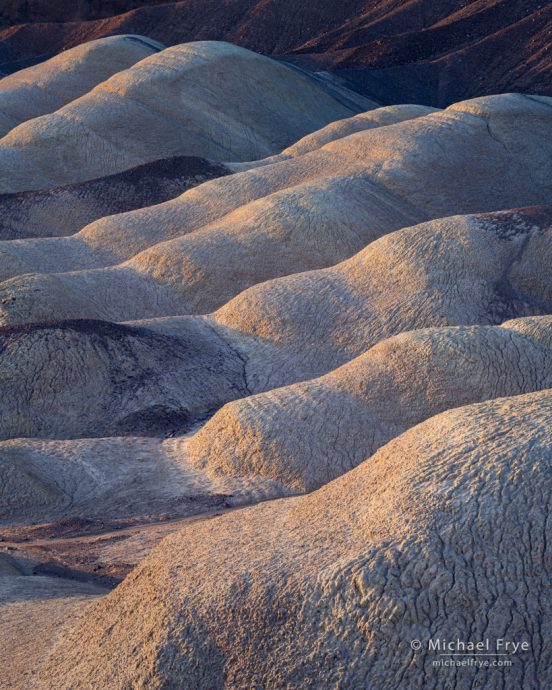
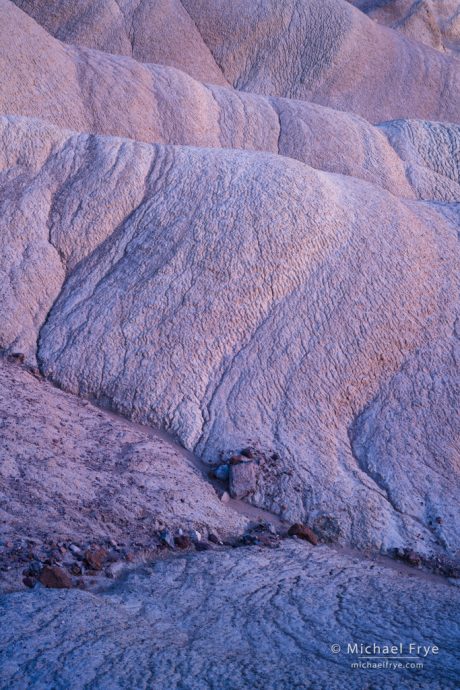








michael, your photos of the dune landscape are magnificent. Hansman
Thank you!
Alright. How can you get so many sweeping sand dune photos with no footprints? And some are later in the day (dusk). Every time I have been to dunes like Death Valley or Great Sand Dunes, there are prints all over the place by mid morning.
These are wonderful. Your are right about the soft light.
You just have to go where the people aren’t. I also try to go to the dunes just after a windstorm. In the first photograph of this post the wind was actually blowing fairly hard at the time; you might be able to see sand blowing off the crests of some of the dunes.
Michael, the photos are great and I really enjoy “moving into them.” But I also really like your story. Your writing pulls me into the photo but also into your thinking. You say “But I hope they’ll get you thinking …” and my response is “You bettcha !” I’m on my way out the door to walk the dog and I’m sure I’m gonna keep thinking …
That’s great Randy, and I hope you gain some insights into your own work.